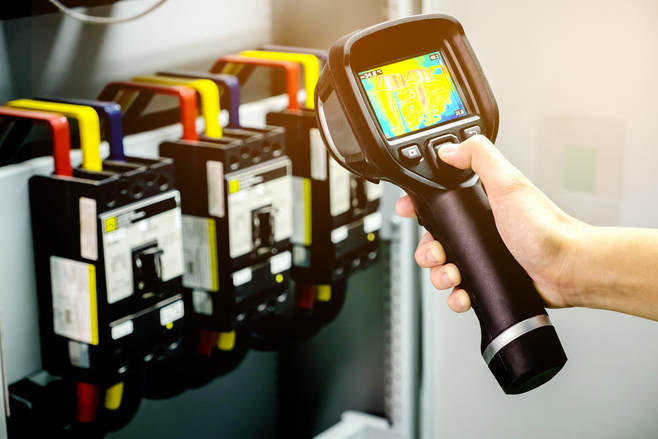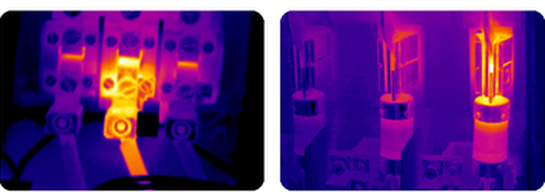How thermography (thermal imaging) can benefit your business

Thermography – or thermal imaging – practised by engineers at Westin Drives, allows the visualisation of heat for maintenance or diagnostic purposes.
Temperature has been used to give an indication of machine condition since the industrial age, as abnormal temperatures often indicate a potential problem.
Feeling a machine with the back of your hand can sometimes help to determine if the temperature is within acceptable limits, though this method has severe safety limitations.
To obtain a precise indication of temperature, direct contact thermometers may be used. This technique is safer, but gives rise to similar safety concerns.
Infrared thermometers are often used for hazardous and difficult to access applications, but they measure the average temperature of an area and, for accurate measurements, the user often has to be close to the application.
In thermography – the application’s infrared radiation is converted by a thermal camera to a visual image.
Different temperatures are indicated as different colours or shades of grey. Thermal cameras allow temperature comparisons over a large area, allowing potentially troublesome hot spots to be found quickly. If the cost of the thermal camera is offset against savings in reduced downtime and maintenance, generally a short payback period can be achieved .
Temperature has been used to give an indication of machine condition since the industrial age, as abnormal temperatures often indicate a potential problem.
Feeling a machine with the back of your hand can sometimes help to determine if the temperature is within acceptable limits, though this method has severe safety limitations.
To obtain a precise indication of temperature, direct contact thermometers may be used. This technique is safer, but gives rise to similar safety concerns.
Infrared thermometers are often used for hazardous and difficult to access applications, but they measure the average temperature of an area and, for accurate measurements, the user often has to be close to the application.
In thermography – the application’s infrared radiation is converted by a thermal camera to a visual image.
Different temperatures are indicated as different colours or shades of grey. Thermal cameras allow temperature comparisons over a large area, allowing potentially troublesome hot spots to be found quickly. If the cost of the thermal camera is offset against savings in reduced downtime and maintenance, generally a short payback period can be achieved .

Benefits that thermal imaging can bring:
- A non-contact and non-invasive inspection technique, often suited as part of a predictive maintenance programme
- An easier, faster and safer method of early fault condition detection
- Inspection, over time, of equipment under same running conditions, allowing thermal anomalies to be easily detected
- Inspection of running equipment under full load, minimising production interference
- Inspection of difficult to access live electrical equipment
- Reduction of production losses due to unplanned downtime, thus increasing productivity and profitability
- Reduction of time necessary for planned shutdown
- Reduction of maintenance and repair costs
- Increased equipment lifetime and mean time between failures (MTBF)
- Increased availability and reliability of plant
- Mechanical equipment
- Overheating conveyor bearing
- Overheating motor
- Damaged refractory lining

